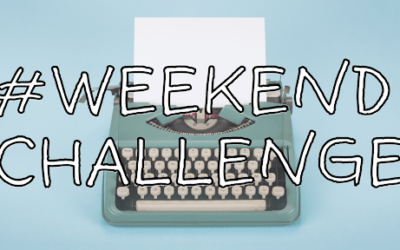
How to Write a Compelling Antagonist
Every good story needs conflict. Without conflict we’re left with a loose plot, no real goal, and no tension to keep us reading on.
Often in fiction, a well-written villain can be more memorable than even your protagonist. They can often work together in chaotic harmony — a yin and yang — to complete the full picture of your narrative. Let’s jump in and learn how to make a compelling antagonist!
Antagonist Equals Conflict
Now, an antagonist doesn’t have to be a person. Conflict can come from anywhere in your story. The villain might be a tidal wave, a horde of zombies, or a corrupt government. However, even in these examples, there will often be minor antagonistic characters in your story to up the tension, and the following ideas will apply to them. This article will concentrate specifically on the antagonist with a face.
Motives
Not every antagonist is full-on evil. In fact, very few are. What would be more boring to a reader than having the bad guy simply be 100% bad to the bone? While our goal isn’t to get the reader to like our antagonist (although that is also possible!) they have to, at the very least, understand why the antagonist is acting the way they are.
It’s a good idea to spend some time in your antagonist’s shoes and ask the very same questions you’d ask your protagonist when you’re developing your story. For example:
- What does your antagonist want most in the world and why?
- What happened to them in their past?
- What are they willing to do to get what they want, and why?
- What are their fears?
- What do they love most in the world?
- What do they hate the most?
Yin and Yang
At the heart of your story, you should know what your protagonist wants. What do they want — or need — to do? Once you’ve answered that question, you can start to truly flesh out your antagonist.
Let’s create a story now for example. Say our protagonist — let’s call her Devon — is the captain of a rag-tag football team. They’re the underdogs. In fact, they haven’t won a tournament in the entire history of the school. Our protagonist wants to win with all her heart. She wants to do her school proud, and more importantly she wants to get a spot in a very high-end, sports-centric college when she’s older. It would be life-changing for her.
So she trains her teammates in her own time, giving them all the personal support they need to concentrate on the game.
OK. That’s the protagonist in the bag. We know her motives, her moral code, and what she wants with all her heart.
Then, the obvious choice for an antagonist would be the captain of the neighbouring school. Let’s call her Beth. What does Beth want? She wants to win too. Except, she’s willing to bend the rules — and outright break them — in order to get what she desires.
This is Yin and Yang. Both the protagonist and antagonist have a very strong goal in mind. What makes them different is their moral code, and what they’re willing to do to achieve their goal.
Reaching Deeper
Now, here we could make our antagonist Beth just simply evil. She is a bratty kid who wants to win, and that’s that.
But, that isn’t very compelling, is it? That’s two-dimensional, and why would anyone care about this character? Her evil actions wouldn’t come as a surprise, because she’s 100% evil. What else could we do to make Beth more compelling?
Maybe Beth has very strict parents, maybe they want to live vicariously through her and force her to practice football rather than be with her friends. Maybe, to up the stakes, her big brother has stolen money from their parents’s business, and has made a bet on the outcome of the tournament. Maybe their whole family is at risk if Beth doesn’t win. She has to win. No matter what.
So now, when Beth digs holes in the protagonist’s practice field, and trips up the goalie and twists her ankle, we don’t condone what Beth is doing — we don’t believe what she is doing is right — but we can at least understand it. We can see the situation from her point of view. This makes Beth more compelling.
This Yin and Yang approach is tried and true, and a great place to begin your plotting. If your protagonist and antagonist want the same thing, then it’s their characterisation that will set them apart, and also set them against one another. This method can work just as well if your protagonist and antagonist want opposing things too. The same sort of balance, the push-and-pull of them, still works.
Why a compelling Antagonist is important
Having a compelling antagonist raises the stakes of your story. It adds tension, interest, and layers.
Your protagonist really is only half the story. If you don’t spend as much time on your bad guy as your good guy, then everything your story is working towards — the confrontation, the climax, the getting-of-the-goals — will feel hollow and one-sided when your protagonist ultimately wins.
To continue the example above, how much more exciting would tournament final be if we know the stakes for both Beth and Devon? While we are rooting for our heroine, we can see at the sidelines how agitated Beth is becoming when they’re a goal down. We can see the tears in her eyes as she looks at her parents — they have no idea about the bet, they have no idea they’re about to lose everything as the clock is ticking down — and we can see the grim determination in her eyes as she’s about to do something terrible.
That, right there, is much more compelling than if Beth was just a cut-out kid with a bad attitude. Antagonists can make or break your story, so treat them with as much care and attention as your protagonist.
Tips for
Writing a Compelling Antagonist
Character work: Do some in-depth character work with your antagonist, just like you would for your protagonist. Find exactly what drives them and why.
Well-rounded: Never make any character — let alone one as important as your antagonist — all good, or all evil. Every person is a shade of grey in reality, and your stories will be much more rich if your characters have a compelling mix of light and dark too.
Past: The way a person is now is not how they have always been. Delve into your antagonist’s past. Was there a turning point for them that set them on this path? And why?
There is an oldie-but-a-goodie bit of writing advice that you may have heard already: the antagonist is the hero of their own story.
While that might not always be applicable to every story, it is a great piece of advice that really makes you think. We’re all heroes of our own story, and our actions will reflect that. Antagonists are not pieces on a chess board. They’re not there to simply cause obstructions when needed. Their actions need to be authentic to their own motives.
Readers are a clever bunch. They expect motives to be logical and compelling, therefore your antagonist needs to be fleshed out enough for you to understand exactly what makes them tick. You need a compelling antagonist.
Learn your antagonist’s wants, needs, and motives, and you’ll be well on the way to creating a gripping story.
Read our Latest Articles for Writers
The Writer’s Guide to Social Media
Today we are talking about a topic that intimidates many writers and illustrators, social media. Good news! It doesn’t have to. The key is to choose the platform that is most enjoyable to you. The one you don’t mind spending time on and fosters authentic...
How to Win a #WeekendChallenge
Thank goodness it’s Friday, WA Community, and not just because it’s the start of the weekend. Friday’s have us happy dancing because that’s when we announce the new #WeekendChallenge prompt. The #WeekendChallenge is an opportunity to write a 100-word entry based on a...
Submitting Your Story: 7 Tips to Survive the Query Trenches
You’ve typed “the end”, received feedback, and revised your story. Congratulations, you are ready to enter the Query trenches! Whether you decide to query an agent or an editor is a personal preference but these seven survival tips will apply to both query routes....
Subscribe to our mailing list
Be the first to find our about our newest blogs, offers and news from Write Academy!






